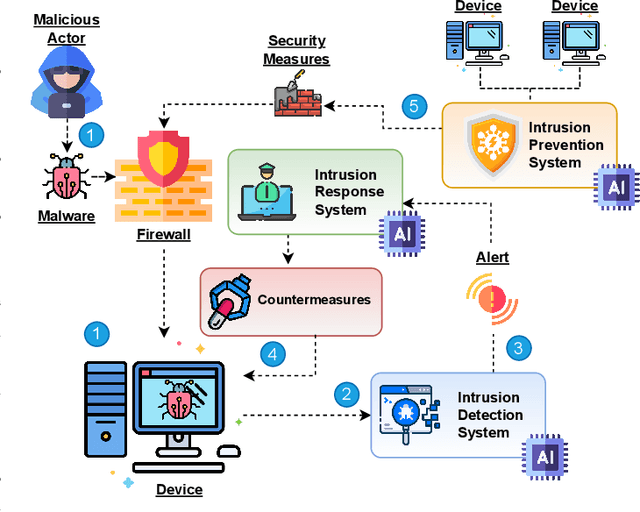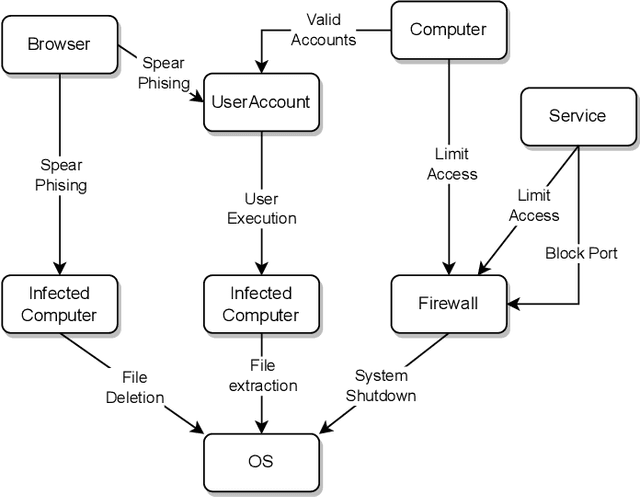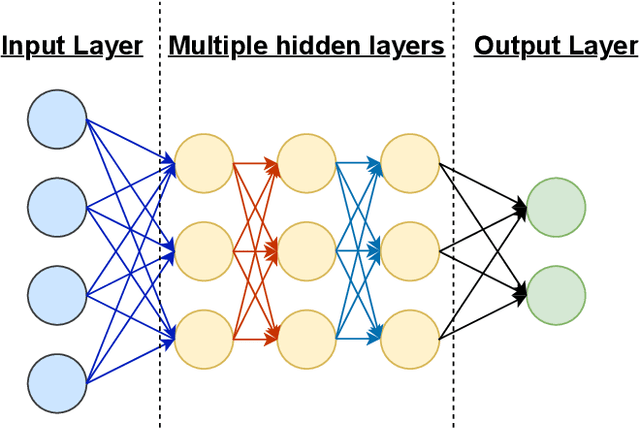Pantaleone Nespoli
Simulating Cyberattacks through a Breach Attack Simulation (BAS) Platform empowered by Security Chaos Engineering (SCE)
Aug 05, 2025Abstract:In today digital landscape, organizations face constantly evolving cyber threats, making it essential to discover slippery attack vectors through novel techniques like Security Chaos Engineering (SCE), which allows teams to test defenses and identify vulnerabilities effectively. This paper proposes to integrate SCE into Breach Attack Simulation (BAS) platforms, leveraging adversary profiles and abilities from existing threat intelligence databases. This innovative proposal for cyberattack simulation employs a structured architecture composed of three layers: SCE Orchestrator, Connector, and BAS layers. Utilizing MITRE Caldera in the BAS layer, our proposal executes automated attack sequences, creating inferred attack trees from adversary profiles. Our proposal evaluation illustrates how integrating SCE with BAS can enhance the effectiveness of attack simulations beyond traditional scenarios, and be a useful component of a cyber defense strategy.
Cyber Deception: State of the art, Trends and Open challenges
Sep 11, 2024Abstract:The growing interest in cybersecurity has significantly increased articles designing and implementing various Cyber Deception (CYDEC) mechanisms. This trend reflects the urgent need for new strategies to address cyber threats effectively. Since its emergence, CYDEC has established itself as an innovative defense against attackers, thanks to its proactive and reactive capabilities, finding applications in numerous real-life scenarios. Despite the considerable work devoted to CYDEC, the literature still presents significant gaps. In particular, there has not been (i) a comprehensive analysis of the main components characterizing CYDEC, (ii) a generic classification covering all types of solutions, nor (iii) a survey of the current state of the literature in various contexts. This article aims to fill these gaps through a detailed review of the main features that comprise CYDEC, developing a comprehensive classification taxonomy. In addition, the different frameworks used to generate CYDEC are reviewed, presenting a more comprehensive one. Existing solutions in the literature using CYDEC, both without Artificial Intelligence (AI) and with AI, are studied and compared. Finally, the most salient trends of the current state of the art are discussed, offering a list of pending challenges for future research.
Tackling Cyberattacks through AI-based Reactive Systems: A Holistic Review and Future Vision
Dec 11, 2023



Abstract:There is no denying that the use of Information Technology (IT) is undergoing exponential growth in today's world. This digital transformation has also given rise to a multitude of security challenges, notably in the realm of cybercrime. In response to these growing threats, public and private sectors have prioritized the strengthening of IT security measures. In light of the growing security concern, Artificial Intelligence (AI) has gained prominence within the cybersecurity landscape. This paper presents a comprehensive survey of recent advancements in AI-driven threat response systems. To the best of our knowledge, the most recent survey covering the AI reaction domain was conducted in 2017. Since then, considerable literature has been published and therefore it is worth reviewing it. By means of several shared features, each of the studies is compared on a common ground. Through an analysis of the research papers conducted on a standardized basis, this survey aims to unravel the complexities and opportunities of integrating AI into cyber defense. The conclusions drawn from this collective analysis provide a comprehensive snapshot of the evolving landscape at the intersection of AI and cybersecurity. This landscape underscores the growing significance of not only anticipating and detecting threats but also responding to them effectively. Additionally, from these reviews, various research challenges for the future are presented. These challenges serve as a roadmap for researchers and practitioners in the field of AI-integrated reactive strategies.
 Add to Chrome
Add to Chrome Add to Firefox
Add to Firefox Add to Edge
Add to Edge